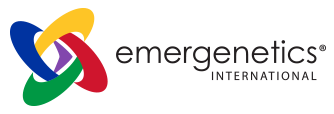
A recent survey revealed that, while many chief human resources officers (CHROs) ranked wellness as a top priority in 2024, less than a quarter of employees strongly agreed that their organization cares about their well-being. As we look at the year ahead, you might wonder what can be done to close the gap between these efforts and their impact.
In working with companies worldwide, I’ve found that investing in soft skills is one of the most effective ways to strengthen wellness. Strong interpersonal aptitudes encourage personnel to feel connected to and supported by those they work with. It’s only under these conditions are staff truly willing to share the challenges they’re experiencing.
In addition to advancing organizational vitality, these competencies are trending in their own right, especially as leaders realize the core limitation of artificial intelligence (AI): a lack of people skills. Employers need to dial up the interpersonal aptitudes of their workforce to successfully navigate change, set strategies, motivate one another and stimulate innovation.
Let’s explore what Human Resources and Talent Development leaders can do to boost soft skills and employee wellness this year.
Amplifying Interpersonal Capabilities
According to Korn Ferry, adaptability, collaboration, communication, critical thinking and empathy are the top five competencies that all people need to navigate the future of work. I invite you to explore these capabilities and use the prompts below to assess whether your organization would benefit from focusing on one or more of these areas.
Adaptability is the capacity to adjust to shifts in one’s environment. This capability is essential as digital transformation integrates into our workplaces, and it promotes well-being by empowering individuals to meet change with resiliency. Think of a recent shift or new initiative introduced in your company. How well did the workforce acclimate, and what were their reactions and responses?
If your company could benefit from greater adaptability, read this blog for more insights.
Collaboration is the action of working with others toward a common purpose. I would add that teamwork is most successful when cognitive diversity is considered. Collaboration skills amplify innovation and cultivate an atmosphere where employees can take interpersonal risks. As you evaluate projects in your business, Do teams often work cross-functionally and ask for opinions from one another?
Discover tips for building a collaborative culture here.
Communication focuses on the effective exchange of information. It’s a vital component of a productive organization, especially when companies lose $12,506 USD per team member yearly because of poor communication. It’s also essential to well-being as personnel need to feel that they will be heard and appreciated before raising challenges. Reflect on the information exchanges in your business. How regularly do staff, managers and leaders experience intent-impact gaps?
Read our blog for inspiration on how you can optimize communication.
Critical thinking is the act of using reason, rationale and self-awareness when analyzing information to form a judgment. The Association of Talent Development reported critical thinking as one of the three most common skills gaps. It’s vital for problem-solving, innovation, decision-making, self-management and self-awareness. Assess how critical thinking shows up in your work. Do personnel prioritize questioning, employ active listening and acknowledge their biases?
Amplify this competency using three best practices.
Empathy is the capacity to understand and share another person’s feelings. It increases job satisfaction, motivation and productivity. Emotional intelligence is foundational to wellness initiatives, as it creates an atmosphere of trust and understanding. Think about the interactions in your workplace. How curious are employees and leaders regarding one another’s feelings and perspectives?
Integrate empathy in your company with insights from this blog.
Organizations that prioritize the development of these competencies will not only close significant skills gaps. They will also be better equipped to cultivate vitality across the workforce.
Take Wellness Programming a Step Further
Knowing that 58% of the global workforce is struggling with well-being, evaluating how you can best support workers holistically is important. In addition to amplifying priority interpersonal aptitudes, reflect on three questions:
- How would you describe the stress levels of staff?
- Do employee benefits incorporate multiple dimensions of health (i.e., mental, physical, social, emotional and financial aspects)?
- How effectively do HR, L&D and leaders collaborate on workplace wellness?
Consider your answers to these thought-starters to determine where to focus your energies. If stress levels are high, start by getting employee feedback to identify underlying causes so you can address them in your programs.
Perhaps you’ve found that your benefits only focus on one or two dimensions of well-being. In that case, explore how you might round out your offerings and poll workers to determine what adjustments would have the biggest impact on their experience.
If you’re noticing silos between different departments, commit to 2025 being your year for change. Connect the dots by unpacking how each group approaches employee wellness and ask staff to note any bright spots and challenges in these initiatives. Then, you can collaborate to amplify the positives and close gaps.
No matter where you start, these efforts will demonstrate that your business is committed to advancing the holistic health of its employees, which will ultimately increase productivity, engagement and retention across your company.
A Unified Approach to Employee Development and Well-being
Organizations that prioritize wellness and soft skill development will be more prepared to navigate the obstacles and opportunities that arise in the workplace. A cohesive approach ensures that employees are equipped with the necessary talents to excel in their roles while also having the support they need to maintain their prosperity. Along the way, you’ll build a more engaged, motivated and productive workforce, capable of driving the business forward.
Ready to optimize your L&D approach? Download our resource!
Or, fill out the form below to speak with our team members about how Emergenetics can improve your training programs.
 Print This Post
Print This Post

